Subareas (Laboratories)

AI Ship
Offshore Platform
Renewable Energy
Underwater/Subsea Technologies
Oceanic Information
Hydrogen/Ammonia
Arctic/Antarctic
Aquaculture
AI Factory
Symbiosis with Ocean
AI Ship
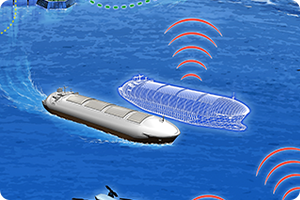
Autonomous ship using AI/IoT technologies is being developed.
The remote and optimum operation and maintenance are achieved.
Offshore Platform
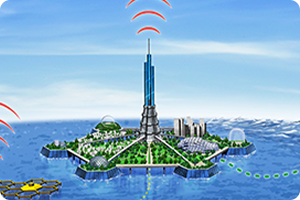
The electricity generated by offshore wind turbines is transformed on the offshore
platform to hydrogen and ship transfer the hydrogen.
The platform is a base and complex for offshore activities.
Renewable Energy
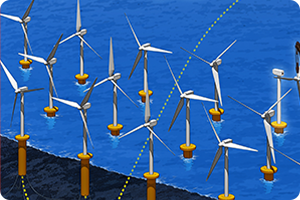
Ocean is abundant in energy resources including renewables.
Offshore wind turbines can reduce carbon emissions.
Underwater/Subsea Technologies
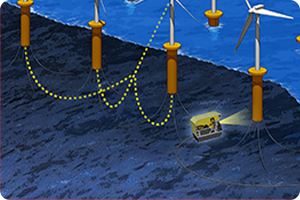
Underwater/Subsea Technologies
Subsea technologies such as underwater robotics,
risers, pipe lines, cables, etc are studied. Ocean floor mineral resources are developed.
Oceanic Information
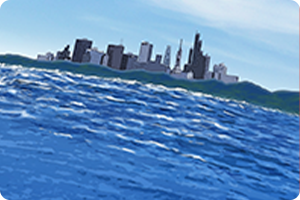
Ocean waves themselves have been the research subject.
The ocean is informatized through data assimilation.
Hydrogen/Ammonia
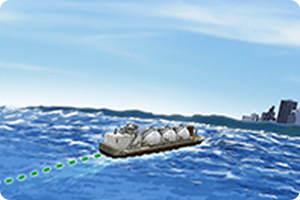
The energy is transformed to hydrogen and ammonia which has a potential for
zero carbon emissions.
The hydrogen ship heads for the cities.
Arctic/Antarctic
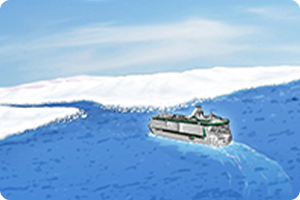
Global warming is more obvious in the arctic and Antarctic regions.
Research of these regions is expected for utilization.
Aquaculture
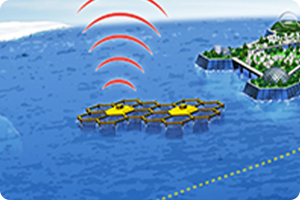
Offshore aquaculture system stably supplies safe,
delicious and inexpensive food to the world.
AI Factory
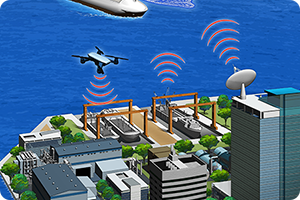
With the help of IoT and AI technologies,
all the processes of factory and yard are monitored,
simulated, controlled and finally optimized.
Symbiosis with Ocean
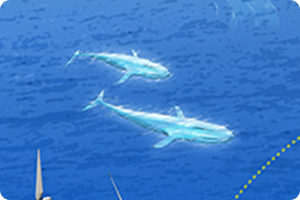
Attention is paid to the ocean species, too.
Ship Intelligentization Subarea

Automatic berthing system using the neural network in order to avoid the accident in berthing under the strong wind and wave condition which requires high skill of a master, the intelligent ship which automatically avoids accidents, such as a collision, sinking of tankers which result in serious sea pollution are researched. Moreover, in order to prevent large inclination of ships at sea leading to the serious accident of capsizing linking directly to a lot of human life loss, the latest researches related to ship stability problems are done. These researches contribute to global standard decision in the U.N. International Maritime Organization and the international towing tank conference.
Atsuo MAKI Researchers Database
Masahiro SAKAI Researchers Database
Structural Integrity Subarea

Waves as high as ten-storey buildings. Yet ships still sail the cruel seas. When designing ship structures, you need to thoroughly and rationaly secure the safety even under complex loads that massive waves generate. This subarea is involved in risk assessment of for ships and other floating structures, focused on simulation technologies that cross multiple fileds, including load and structural response, bucklings and ultimate strength and structural reliability. This research is deeply related to the development of design rules or standards for ships. As a result, many of our joint research areas are agencies and organization involved in the rule development.
Kazuhiro IIJIMA Researchers Database
Akira TATSUMI Researchers Database
Subarea of Marine Hydro- Science and Engineering

The flow field and hydrodynamic forces around ships and marine structures are investigated using the theoretical and computational fluid dynamics to understand the relationship between the hull or structure form and the performance. Many ship related projects such as optimum hull form design, low drag body design and new propulsor development are carried out. Experimental fluid dynamics techniques are also used for investigation. The fish-like underwater vehicle is also investigated. The practical fish like robots (the squid robot with two undulating side fins) are constructed and tested in the towing tank. Other hydrodynamic research topics are studied in many fields, such as marine environmental engineering.
Hiroyoshi SUZUKI Researchers Database
Hidetaka SENGA Researchers Database
Thant Zin HTUN Researchers Database
Ocean Material and Manufacturing Engineering Subarea

In addition to constructing mathematical models for the force of waves affecting ships and floating structures, also researching how quickly and accurately partial strength evaluations can be performed for the complex loads applied to massive iron structures. We also analyze the physical state of shipbuilding where the experience of veteran technicians combines with a reliance on intuition to develop simulation technologies that may shorten the time needed to pass along skills and automate work.
Naoki OSAWA Researchers Database
Junji SAWAMURA Researchers Database
Takaaki TAKEUCHI Researchers Database
Subarea of Ocean Space Development

To improve the seakeeping performance of ships in actual seas and develop an integrated system to evaluate its performance accurately, we study the wave-body hydrodynamic interactions and the stochastic characteristics of sea state. We also study the performance and safety of very large floating structures for effective use of ocean space and energy. The other research topics are the development of an innovative wave basin which can generate desired waves for long duration and the study on strongly nonlinear free-surface problems by means of frontier CFD methods.
Munehiko MINOURA Researchers Database
Takahito IIDA Researchers Database
Structural Dynamics Subarea
Shigehiro HAYASHI Researchers Database
Dep. of Joining Mechanics and Analyses

Our research field is the joining and welding technology for constructing large steel structures. Since joining is one of the essential processes to assemble products, the technology can be applied to not only ships but also automobiles and space crafts. Main part of our research is the virtual engineering based on complex computational models. In addition to the welding, we are also challenging to develop advanced simulation tools and measuring methods useful to analyze multiply thermal-mechanical phenomena in solid-state joining and additive manufacturing for safety assessment of structures.
Joint Research Chair for Offshore Wind System Integration

Offshore wind is considered the trump card for making renewable energy the main source of power. Surrounded by the sea on all sides, there are potential suitable sites for offshore wind power everywhere in Japan. Under the national targets such as "carbon neutrality by 2050" and "45 GW offshore wind power installation by 2040," offshore wind may become a key industry of Japan in the future. Against this background, the "Joint Research Chair for Offshore Wind System Integration" has been established.
Masaaki SHIBATA
Saika IWAMATSU
+ Cooperative Members

